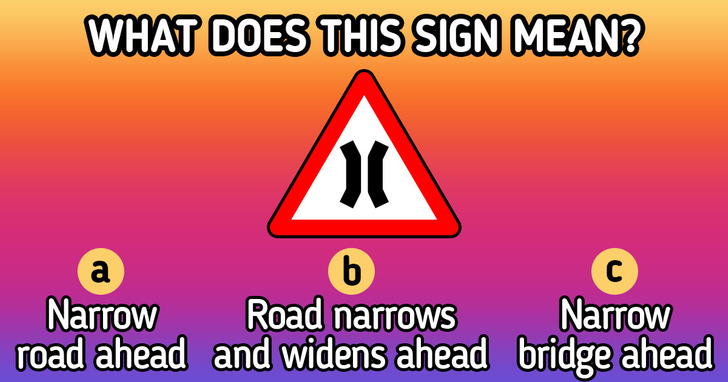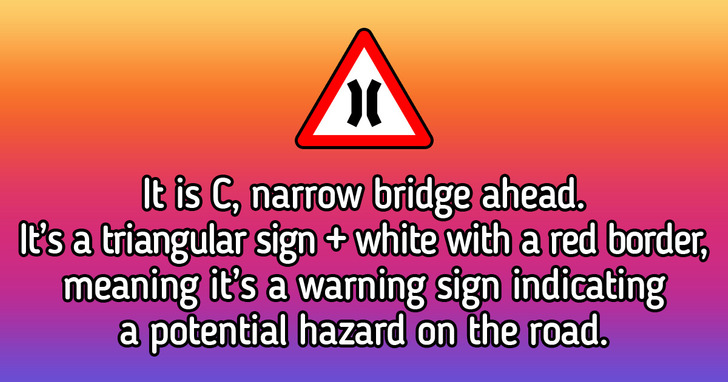How to Distinguish Traffic Signs
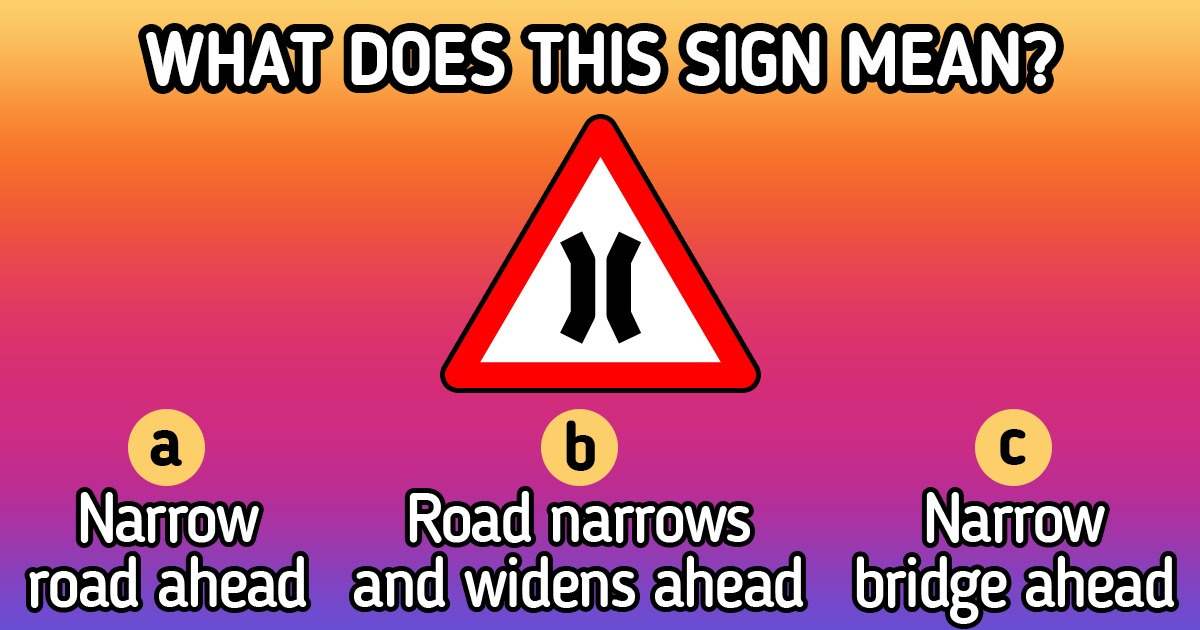
Violation of traffic signs is a no-no if you want to be a good driver. Traffic signs play a crucial role in directing, informing, and controlling traffic participants. Although they may differ depending on the country, they mostly coincide in the countries that are parties of the Vienna Convention on Road Signs and Signals and are usually easy to recognize. Let’s take a look at the 5-Minute Crafts short step-by-step guide on how to easily distinguish traffic signs no matter where you are.
Types of traffic signs
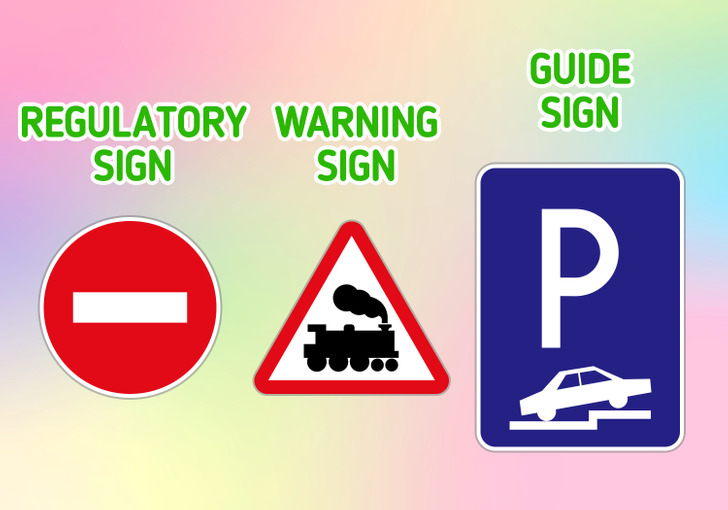
The most basic information regarding types of traffic signs is their division into one of 3 categories:
- Regulatory signs. They give orders and disregarding them may mean a violation of the law.
- Warning signs. As the name suggests, they’re meant to warn us about something, that is, to prepare us in time for a potential hazard on the road ahead (slippery or bumpy road, sharp bend, etc.).
- Guide signs. These are meant to provide us with information.
Step 1. Distinguishing by shape
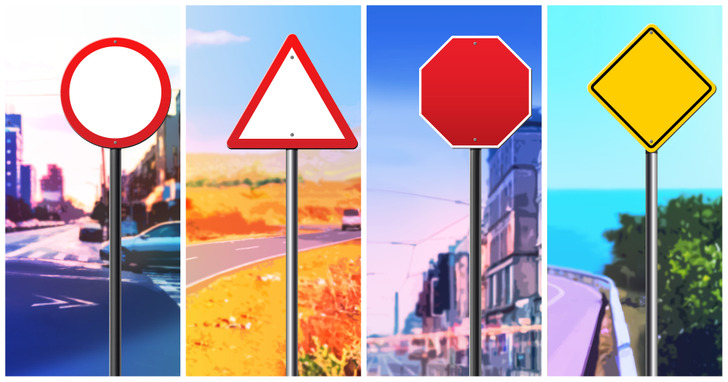
People drive at different times of the day and in different weather conditions. This is why the shape of a traffic sign is the most important part of it, as it gives us a basic understanding of its meaning, even in conditions of poor visibility. These are the shapes of signs that we need to know:
- The circular signs are regulatory signs. We must obey these signs. According to the Vienna Convention on Road Signs and Signals, circular signs can be mandatory, prohibitive, and restrictive.
- The triangular signs are warning signs. They help us react in a proper way: to slow down or be ready to react if necessary.
- The rectangular signs are guide signs. They give us information, for example, directions, so we can follow them.
- The diamond-shaped signs can be both regulatory and warning signs. Both in the US and Europe, the diamond-shaped signs can indicate potential danger ahead, as well as road priority. Most warning signs in the US are this shape.
Step 2. Distinguishing by color
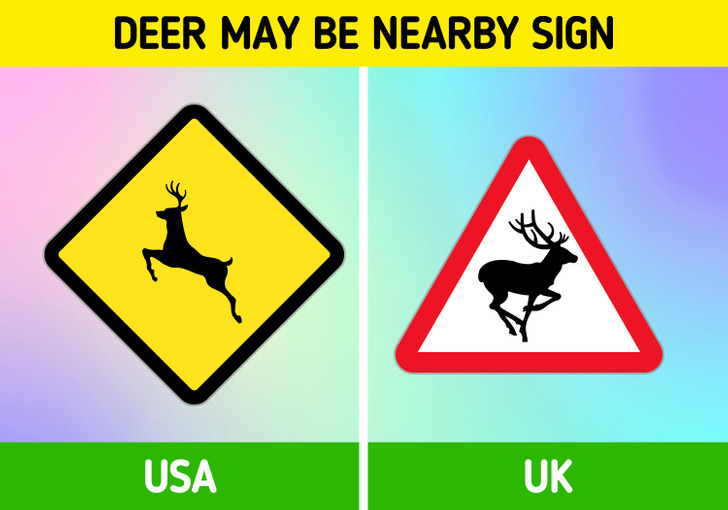
The color of the sign is what gives us further information about what must and mustn’t be done on the road. This is why learning the basic colors of traffic signs helps us complement our knowledge.
- Circle. They have a blue or white background, and the white ones have a red border.
- Triangle. Their usual color is white with a red border.
- Rectangle. Their color varies depending on the type of road. Motorway signs are blue, primary route signs (like highway signs) are green. Brown signs usually contain tourist information, while traffic diversions are indicated by yellow signs. The Vienna Convention, however, offers very few guidelines regarding the color of these signs.
- Diamond. These signs are yellow with black or white elements. For example, the European white triangle warning signs with red borders can be yellow and be diamond-shaped in the US.
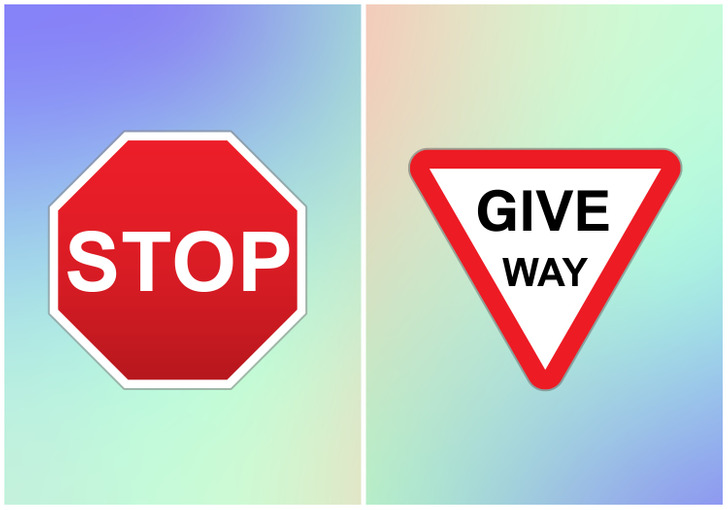
There are some exceptions to the shape and color traffic sign rule, let’s take a look at them:
- The octagonal red sign with the word STOP evidently means we need to stop our vehicle.
- The triangle put upside down means we need to Yield to the oncoming traffic. Text may or may not be included.
These exceptions are not there without a reason: they are shaped differently because they need to be given greater prominence. In other words, that way we can easily recognize the silhouettes of these signs from a distance and react in time by slowing down as we approach them.
The color system for European traffic signs
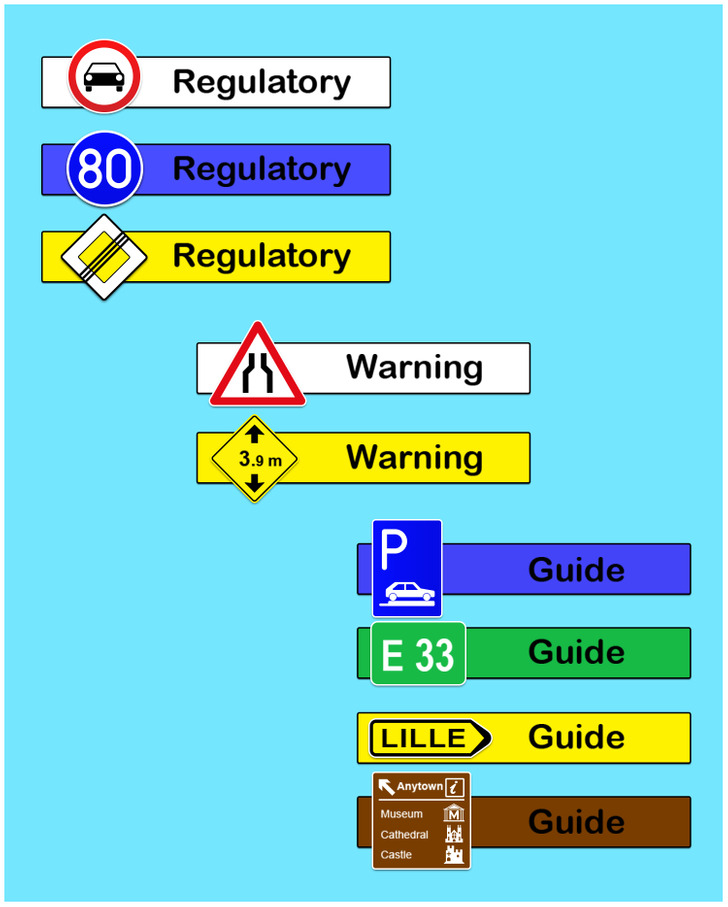
The color system for US traffic signs
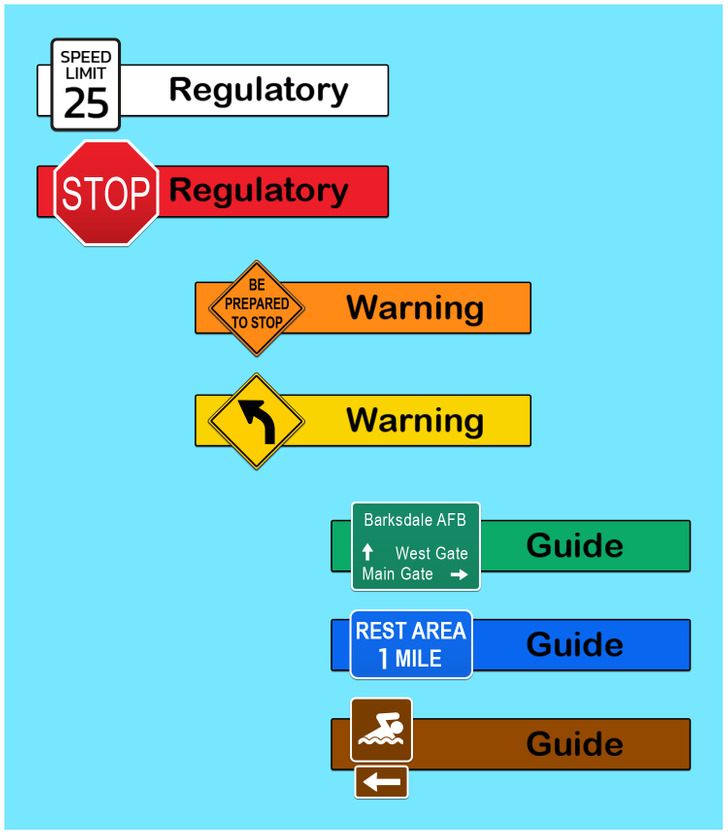
As we mentioned earlier, the US sign system differs from the European and this can be seen in sign coloring as well. Check out the chart above to find out more.
Step 3. Shape + color + symbol
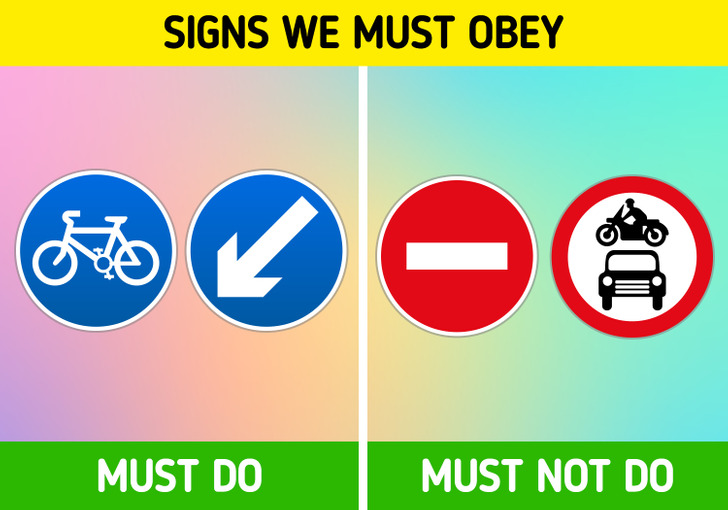
After you have learned the basics of the shape and coloring system, you need to learn how to recognize combinations of different elements of the sign: that is, the shape, color, and symbol.
Let’s check some other examples that illustrate the importance of recognizing combinations of different elements of the sign:
- Red rings. These traffic signs tell you what you must not do. For instance, you must not exceed a certain speed, or must not enter a road, depending on the symbol that you see depicted on the sign. According to the Vienna Convention, these signs are mandatory, prohibitive, or restrictive.
- Blue circles. When you see these signs, you know that they tell you what you must do. For example, they may tell you to stay above a minimum speed, or to turn right, again depending on the symbol. Again, they can be mandatory, prohibitive, or restrictive in the countries that are parties to the Vienna Convention on Road Signs and Signals.
Attention: If there is a plate below the sign, it is to further qualify the message of the main sign.
Bonus: Test your knowledge
